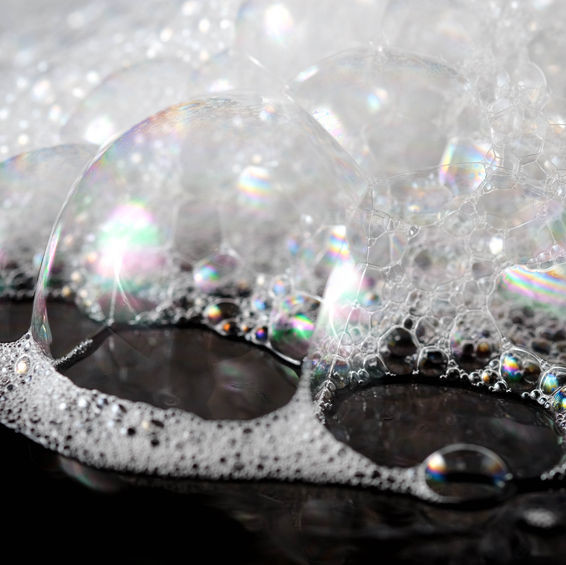
Chemical Control
What is Chemical Control?
Chemicals are used in food manufacturing for production, maintenance, sanitation, pest control, and laboratory work. Due to the potential hazards of improperly handled chemicals, a chemical control program is required to ensure plant chemicals do not pose a risk to product or personnel.1 Effectively controlling chemicals that are essential and routinely used manages this risk.2
Relevance
In the early 1900’s, the increase in large-scale food production without proper sanitation practices led to an increase in the use of insecticides. Foods adulterated with toxic compounds increased human ingestion of heavy metals. The rise of agrochemicals in the 1930’s soon followed, and food additives became common in processed foods.3
The science of toxicology advanced in the 1950’s, creating systematic approaches for evaluating the safety of chemicals used in food production.3 The risks of food contaminants and adulterants led to chemical regulation in the food industry.
FDA Compliance
You must ensure the chemicals that will contact food or food contact surfaces are in compliance with 21 CFR 173.310.2 Developing and maintaining a sound control program for chemicals that are used within a food handling operation is a prerequisite for a successful HACCP plan and is necessary to maintain a safe environment.
Under the FDA’s “Current Good Manufacturing Practice, Hazard Analysis, and Risk-Based Preventive Controls for Human Food,” requirements have been established for current food manufacturing practice for human-grade food Current Good Manufacturing Practices (CGMP’s), for hazard analysis and risk-based Preventive Controls for Human Food (PCHF).4
The PCHF requirements implement the provisions of the FDA Food Safety Modernization Act (FSMA), established in section 418 of the Federal Food, Drug, and Cosmetic Act (FD&C Act) (21 U.S.C. 350g). Part 117 includes several complete or partial exemptions from the PCHF requirements. See 21 CFR 117.5 for a list and description of these exemptions.5
Chemical control falls under hazard analysis. The FDA states, “The first step is hazard identification, which must consider known or reasonably foreseeable biological, chemical, and physical hazards. These hazards could be present because they occur naturally, are unintentionally introduced, or are intentionally introduced for economic gain (if they affect the safety of the food).
If the hazard analysis reveals one or more hazards that require a preventive control, the facility must have and implement written preventive controls for the identified hazards.”5
Application
The goal of chemical control is to eliminate the risk of contamination of food contact surfaces and finished products with non-food-grade substances.6 This program also protects employees and the production area from exposure to hazardous chemicals by managing the purchase, receiving, storage, mixing, labeling, and use of all chemicals in the plant.6
Nine components of a chemical control program:1
- Identification of all chemicals on site
- Controlled storage
- Segregated storage
- Chemical log
- Chemical inventory
- Labels and safety data sheets
- Container control
- Chemical approval
- Contractor chemicals
Once chemical control has been developed, the following elements should be established:6
- An assigned person/position responsible for managing the program
- An approved chemical list with intended uses
- Segregation and control of chemical storage areas
- Training in hazard communication / emergency procedures
- Maintenance of Material Safety Data Sheets (MSDS)
- Facility should maintain a MSDS program and not allow chemicals to enter facility unless approved and accompanied by MSDS.
- MSDS’s should be available to all employees.
A chemical log can be used to create a master list of approved chemicals.1
| Chemical Log | ||||
| Chemical Name | EPA# | Approved Storage | Approved Use | Authorized Personnel |
Once a chemical control program has been set in place, regular employee training and internal audits will ensure continued success.
References
- AIB International. “Food Safety and Sanitation.” Food Safety and Sanitation Distance Learning Course, Chapter 19.
- Ray, P. “[Food Safety] Developing a Food Plant Chemical Control Program.” Quality Assurance & Food Safety, 25 Oct. 2006, http://www.qualityassurancemag.com/article/-food-safety–developing-a-food-plant-chemical-control-program/
- Jackson, L.S. ”Chemical Food Safety Issues in the United States: Past, Present, and Future.” Journal of Agricultural and Food Chemistry 2009 57 (18), 8161-8170 DOI: 10.1021/jf900628u.
- U.S. Food and Drug Administration. “Guidance Documents & Regulatory Information by Topic – Draft Guidance for Industry: Hazard Analysis and Risk-Based Preventive Controls for Human Food.” Center for Food Safety and Applied Nutrition. https://www.fda.gov/Food/GuidanceRegulation/GuidanceDocumentsRegulatoryInformation/ucm517412.htm
- U.S. Food and Drug Administration. “Food Safety Modernization Act (FSMA) – FSMA Final Rule for Preventive Controls for Human Food.” Center for Food Safety and Applied Nutrition. www.fda.gov/food/guidanceregulation/fsma/ucm334115.htm
- Institute of Packaging Professionals. “Prerequisite Programs – Chemical Control Program.”

